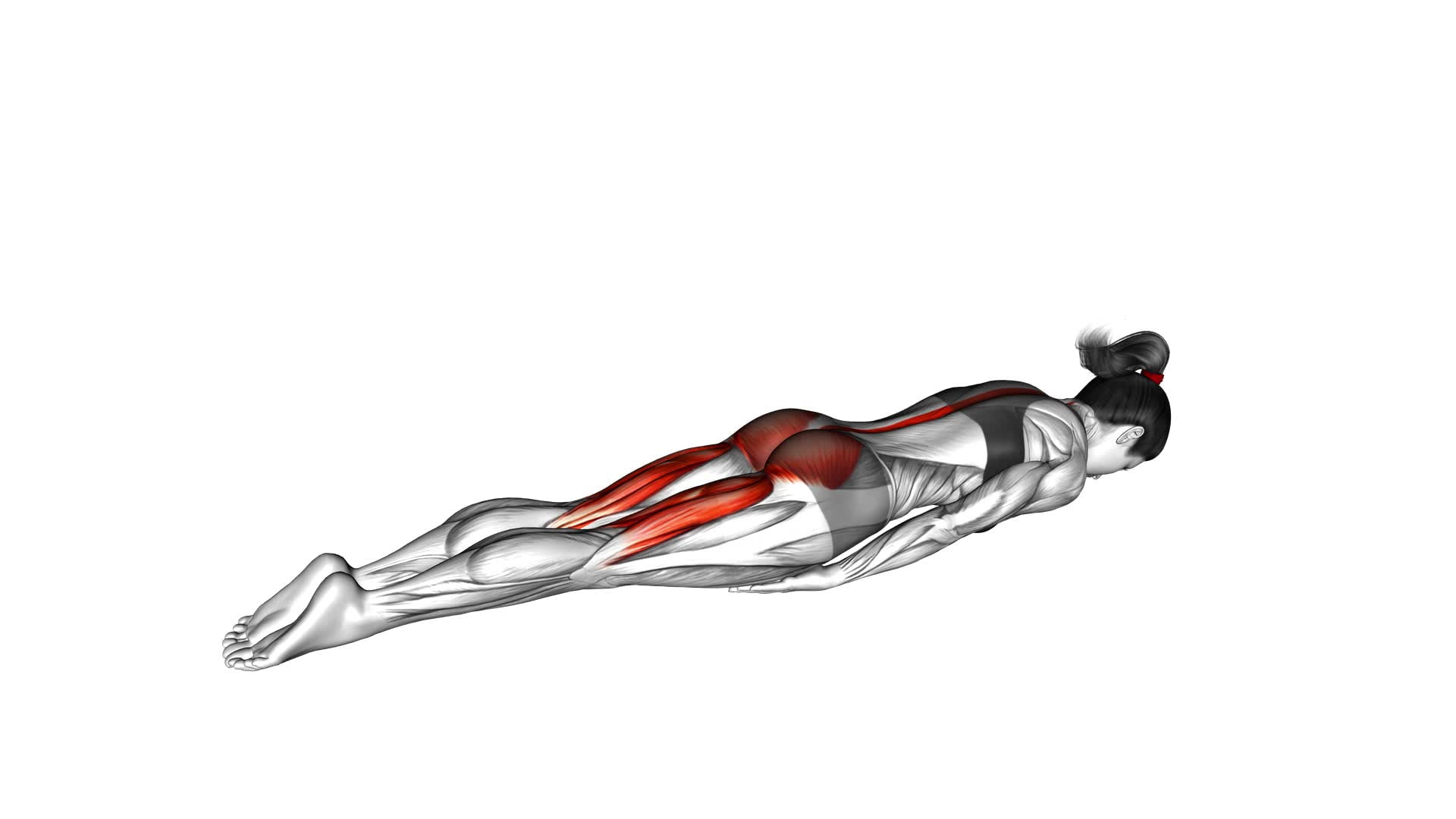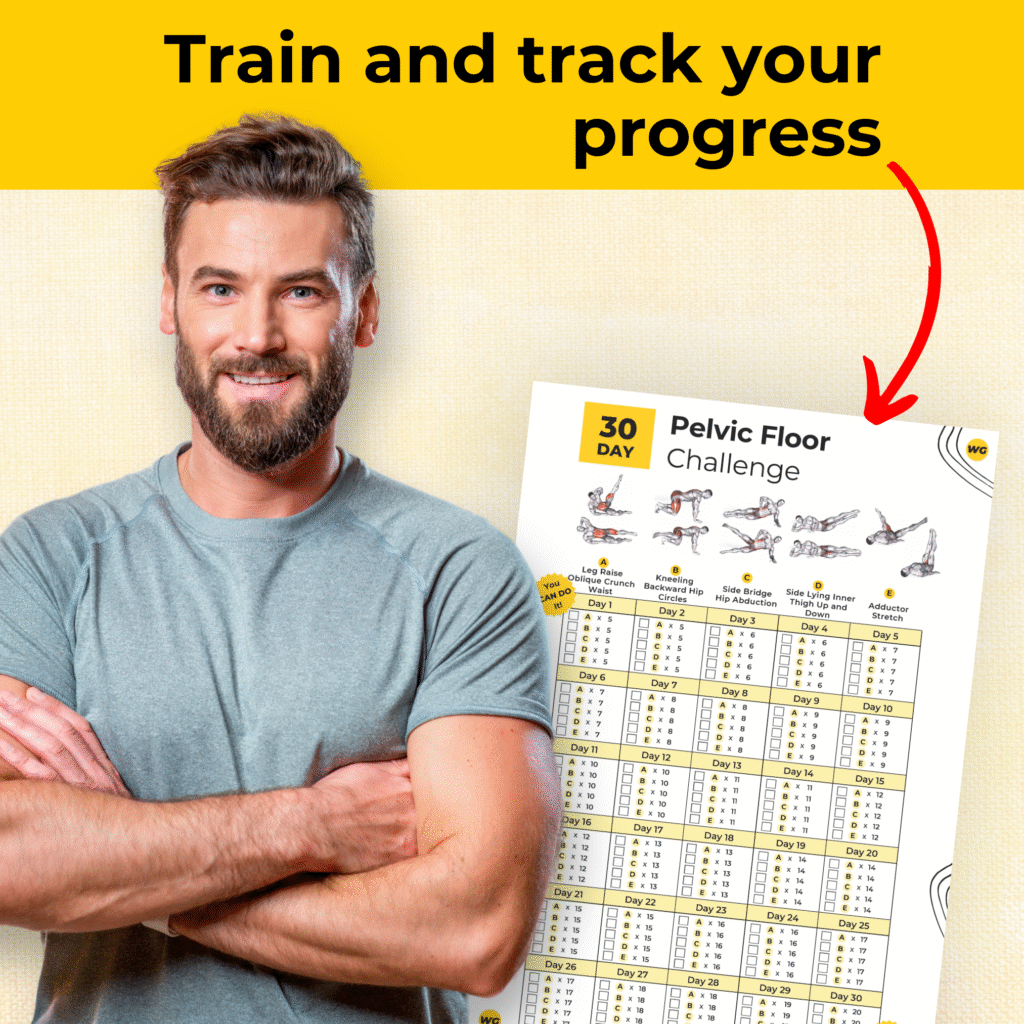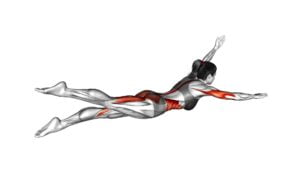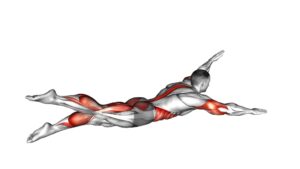Swimmer Kicks (female) – Video Exercise Guide & Tips

Get ready to take your swim kicks to the next level! In this article, we'll guide you through effective exercises and provide valuable tips to improve your technique.
Watch This Exercise Video
Strengthen your core and perfect your body alignment for powerful kicks that will propel you through the water with ease.
Learn about different types of kicks and their unique benefits, as well as common mistakes to avoid.
Plus, we'll share advanced drills to help you enhance your swim kick.
Dive in and let's get started!
Key Takeaways
- Proper body alignment and core strengthening are crucial for effective swimmer kicks.
- Ankle flexibility is essential for effective kicks.
- Different types of kicks, such as flutter kick, dolphin kick, breaststroke kick, and eggbeater kick, offer various benefits.
- Common mistakes to avoid in kicking technique include lack of ankle flexibility, improper body position, overkicking, and lack of control in the kick.
Proper Body Alignment for Effective Kicks
To achieve effective kicks in swimming, maintain proper body alignment throughout your stroke. Body positioning plays a crucial role in maximizing the power and efficiency of your kicks. When swimming, it's important to keep your body streamlined and horizontal in the water. This means that your head should be in line with your spine, your shoulders should be relaxed and rolled slightly forward, and your hips should be high in the water. By maintaining this body position, you reduce drag and create a more efficient kick.
In addition to proper body positioning, ankle flexibility is also essential for effective kicks. Your ankles should be flexible enough to allow for a full range of motion during the kick. This means that your toes should be able to point downward as you initiate the kick and then flex back towards your shins as you complete the kick. This dorsiflexion and plantarflexion of the ankles helps to generate more power and propulsion in the water.
Strengthening Your Core for Powerful Kicks
Strengthen your core to enhance the power and effectiveness of your kicks in swimming. A strong core provides stability and control, allowing you to generate more force with each kick. Here are three key ways to strengthen your core for powerful kicks:
- Plank exercises: Incorporate plank variations into your workout routine to engage your core muscles. Start with a basic forearm plank, holding the position for 30 seconds and gradually increasing the duration. You can also try side planks and plank variations like knee-to-elbow planks to target different muscle groups within your core.
- Medicine ball exercises: Using a medicine ball adds resistance and challenges your core muscles. Try exercises like Russian twists, where you sit on the ground with your knees bent, holding the medicine ball, and rotate your torso from side to side. Another effective exercise is the medicine ball slam, where you lift the ball overhead and forcefully slam it down while engaging your core.
- Pilates: Pilates is an excellent way to improve core strength and flexibility. Incorporate exercises like the hundred, where you lie on your back, lift your legs off the ground, and pump your arms up and down while engaging your core. Other Pilates exercises like the roll-up and the teaser also target your core muscles.
Different Types of Kicks and Their Benefits
Start by mastering the four main types of kicks to maximize your swimming performance. The different types of kicks in swimming are the flutter kick, dolphin kick, breaststroke kick, and the eggbeater kick. Each kick has its own benefits and uses in different swimming strokes.
The flutter kick is the most commonly used kick in swimming. It involves kicking the legs up and down in a continuous motion. This kick is used in freestyle and backstroke and helps propel the swimmer forward. To improve your flutter kick speed, focus on ankle flexibility. Ankle flexibility is crucial for generating power and increasing the speed of your kick.
The dolphin kick is used in butterfly and underwater swimming. It involves a simultaneous up and down motion of both legs, similar to a dolphin's tail. This kick generates a lot of power and speed, making it essential for fast swimming. To improve your dolphin kick, work on core strength and flexibility in your hips and lower back.
The breaststroke kick is unique because it involves a frog-like motion of the legs. The legs move outwards and then back together, creating a propulsive force. This kick is used in the breaststroke and requires strong leg muscles and ankle flexibility.
The eggbeater kick is used in water polo and synchronized swimming. It involves a circular motion of the legs to keep the body upright in the water. This kick requires strong leg muscles and hip flexibility.
Mastering these four main types of kicks will enhance your swimming performance and help you become a more efficient and powerful swimmer. Focus on improving ankle flexibility to increase your flutter kick speed and work on core strength and hip flexibility for a stronger dolphin kick.
Common Mistakes to Avoid in Your Kicking Technique
When kicking in the water, be mindful of the common mistakes that can hinder your technique and slow your progress. To avoid these mistakes and improve your kicking technique, consider the following tips:
- Lack of ankle flexibility: One common mistake is having rigid ankles, which limits the range of motion in your kick. To improve ankle flexibility, incorporate exercises that target this area, such as ankle stretches and ankle rotations. This will allow for a more powerful and efficient kick.
- Incorrect body position: Another mistake is maintaining a poor body position while kicking. It's important to keep your body aligned and streamlined in the water, with your hips and legs close to the surface. This reduces drag and increases the effectiveness of your kick.
- Overkicking: Overkicking, or kicking too fast and forcefully, is a common mistake that can waste energy and lead to fatigue. Focus on a smooth and controlled kick, using your entire leg from the hip to the toes. This will help generate power without unnecessary strain.
By avoiding these common mistakes and implementing the tips mentioned above, you'll be on your way to improving your kicking technique.
Now, let's move on to the next section, where we'll discuss advanced drills to further enhance your swim kick.
Advanced Drills to Improve Your Swim Kick
To enhance your swim kick, incorporate advanced drills into your training regimen. These drills focus on advanced kicking techniques and incorporate equipment to further improve your swim kick.
One such drill is the vertical kick. Start by positioning yourself vertically in the water, with your hands by your sides. Begin kicking vigorously, using a flutter kick motion. This drill helps to strengthen your leg muscles and improve your overall kicking power.
Another advanced drill is the dolphin kick with a kickboard. Hold the kickboard in front of you while lying on your stomach in the water. Perform the dolphin kick motion, using both your hips and your core to generate power. The kickboard adds resistance, making this drill more challenging and effective for building strength in your legs.
Incorporating fins into your kick training can also be beneficial. Fins provide additional propulsion, allowing you to focus on the technique and power of your kicks. Start by using shorter fins and gradually progress to longer ones as your kicking skills improve.
Remember to always focus on maintaining proper form and technique during these advanced drills. By incorporating advanced kicking techniques and incorporating equipment into your swim kick training, you can take your swim kick to the next level and improve your overall swimming performance.
Frequently Asked Questions
How Often Should I Incorporate Swimmer Kicks Into My Workout Routine?
To get the most out of your workout routine, it's important to incorporate swimmer kicks regularly. These kicks have numerous benefits, such as improving your leg strength and flexibility.
To properly perform swimmer kicks, lie on your stomach with your legs extended and kick them up and down in a fluttering motion.
Aim to include swimmer kicks in your routine at least two to three times a week for optimal results.
Can Swimmer Kicks Help Improve My Overall Swimming Speed?
Swimmer kicks can definitely improve your overall swimming speed. By incorporating swimmer kicks into your workout routine, you can enhance your swimming technique and gain several benefits.
These kicks target your leg muscles, helping you develop greater leg strength and power. This increased strength translates into faster kicks and better propulsion in the water.
Additionally, swimmer kicks also improve your body position in the water, allowing for a more streamlined and efficient swim.
Are There Any Specific Stretches or Warm-Up Exercises I Should Do Before Practicing Swimmer Kicks?
Before practicing swimmer kicks, it's important to do some warm-up exercises and stretches to prepare your muscles and prevent injury.
Start with light cardio, like jogging or jumping jacks, to get your blood flowing.
Then, perform dynamic stretches that mimic the movements of swimmer kicks, such as leg swings and hip rotations. This will help increase your flexibility and range of motion.
Remember to listen to your body and stop if you feel any pain or discomfort.
What Are Some Alternative Exercises or Activities That Can Complement Swimmer Kicks and Further Enhance My Swimming Performance?
Looking to enhance your swimming performance? Dryland exercises and core strength training can be great complements to swimmer kicks.
By incorporating dryland exercises such as planks, squats, and lunges, you can strengthen your muscles and improve your overall swimming power.
Additionally, focusing on core strength exercises like Russian twists and flutter kicks can help improve your swimming technique and stability in the water.
Incorporating these activities into your training routine can take your swimming performance to the next level.
Are There Any Specific Tips or Techniques for Maintaining Proper Breathing During Swimmer Kicks?
When it comes to swimmer kicks and maintaining proper breathing, there are some helpful techniques to keep in mind.
First, make sure to exhale slowly and fully underwater. This will help you take in a deep breath when you turn your head to the side.
Another tip is to avoid holding your breath, as it can cause tension and impact your performance.
Lastly, be mindful of common mistakes like lifting your head too high or breathing too late.
Conclusion
In conclusion, mastering the proper technique and form of swim kicks is essential for swimmers looking to improve their performance in the water.
By focusing on body alignment and core strength, swimmers can achieve powerful and effective kicks.
Understanding the different types of kicks and their benefits can also enhance overall swimming abilities.
It's important to avoid common mistakes and continuously practice advanced drills to further improve swim kicks.
With dedication and practice, swimmers can take their kicking technique to the next level.

Author
Years ago, the spark of my life’s passion ignited in my mind the moment I stepped into the local gym for the first time. The inaugural bead of perspiration, the initial endeavor, the very first surge of endorphins, and a sense of pride that washed over me post-workout marked the beginning of my deep-seated interest in strength sports, fitness, and sports nutrition. This very curiosity blossomed rapidly into a profound fascination, propelling me to earn a Master’s degree in Physical Education from the Academy of Physical Education in Krakow, followed by a Sports Manager diploma from the Jagiellonian University. My journey of growth led me to gain more specialized qualifications, such as being a certified personal trainer with a focus on sports dietetics, a lifeguard, and an instructor for wellness and corrective gymnastics. Theoretical knowledge paired seamlessly with practical experience, reinforcing my belief that the transformation of individuals under my guidance was also a reflection of my personal growth. This belief holds true even today. Each day, I strive to push the boundaries and explore new realms. These realms gently elevate me to greater heights. The unique combination of passion for my field and the continuous quest for growth fuels my drive to break new ground.







